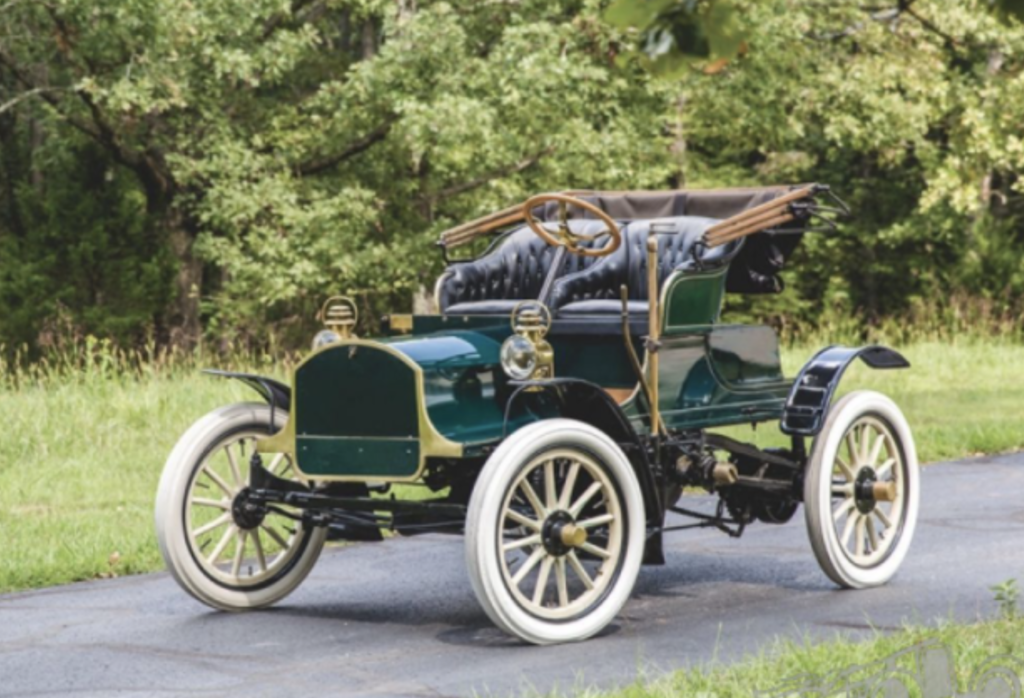One summer my father decided to level out the lean that had grown in the barn as its foundation had settled, and he and I set to work with jacks and shovels to prop the support beams.
Part of the work to do this involved cleaning out the area under the support beams. The barn sat on a hill and had an underground open basement area you could loop around to underneath, and over the years this basement / garage area had been used by the horsemen cleaning out the four horse stalls on the main floor above. There was a huge pile of decades-old horse manure, and my job was to move it so we could set up pneumatic jacks.
But a surprising thing happened on the way to the unwelcome task of shoveling out under the old barn: we found first a wheel, then a chassis, and then ultimately what emerged was a nearly perfect 1906 Knox Model F-4 car, mummified in horse dung after 80 years.

We knew my great-grandfather was (in)famous in town for his fascination with building cars, and was the frequent object of ridicule because, at the time, everyone knew horses were cheaper and easier.
He was also a famously terrible driver, as this later photo shows one of his cars upended right in front of the old house, shown in the left of the picture.
I was telling this story to my wife the other day and looked up the 1906 Knox Model F-4 on the internet to show her.
It was a car that was essentially impractical: it could not drive uphill because it had no fuel injection, so you had to drive it backwards up hills. It looked like a horse carriage, or at least a car designed by people who built horse carriages, and had a 2 speed engine which produced all of 8 horsepower and claimed an improbable top speed of 35 miles per hour. When my dad had it restored and drove it in a parade, it putted along at about walking speed and the throttle roared like a Sherman tank.
At the time, in 1906, horses were certainly faster, quieter, and (if my great-grandfather was driving) a lot safer.
This whole episode looking up the car and remembering the story reminded me of where I think we are right now with Data Science in investing.
I agree Excel is still probably faster and easier to use for most single-threaded investment tasks. Python libraries can occur as a bit esoteric, exotic, or difficult to understand. Sometimes we engineers break them in our haste to try out new stuff, and in general coding can be intimidating if you’re not familiar with it. But to me, the future is clear. With all respect to horses, I’ve got the same bug as my great-grandfather: I’m building cars.
Follow the journey, and learn more about Candas here.
Written by Jed Gore, CFA
A Senior Product Manager at Canalyst responsible for the Data Science & Python Workflow platforms. A 1992 graduate of Princeton University, Jed has 18+ years experience as a fundamental analyst and portfolio manager at hedge funds such as Diamondback, Millennium, and Schonfeld, and 11 years combined experience coding for Wall Street banks/hedge fund-facing tech firms. Jed is passionate about the use of a combined skill set of fundamental analysis and coding – Data Science – in investing and is the author and maintainer of the Canalyst Candas library. He lives in Greenwich, CT, with his wife and two children and is an avid hiker and acoustic guitarist.
